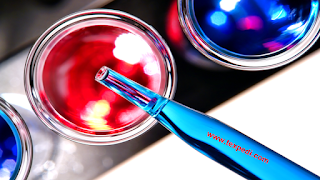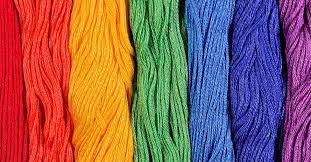Affinity: is the attraction of dye to the fibre at normal condition of dye bath. It defines the quality of the dye. Affinity of a dye does not depend on any external factors such temperature, M:L, type of fibre or concentration of electrolyte etc. Initial absorption of dyes due to affinity is called the color strike.
Substantivity: is the attraction of dyes to fibre at changed condition or precise condition. Substantivity of a dye depends on various external factors such temperature, M:L, type of fibre or concentration of electrolyte etc. It is the tendency of a dye to move from a solution into fibres during dyeing condition.
Shade%: The amount of dyes required to produce a desired color are usually expressed as percentage of the weight of fibre. It is termed as Shade% that means the depth of color.
For example, Shade percentage is expressed as 1%, 2%, 5% owf (on the weight of fabric)/ owg (on the weight of goods) / owm (on the weight of material) etc.
Scale of shade%:
| Shade | Shade% |
| Light shade | up to 0.5% o.w.f |
| Medium shade | 0.6 – 1.5 % o.w.f |
| Dark/Deep shade | 1.6 % and above |
The color yield: is the depth of the color of dyeing per amount of dye in the material. Quantitative assessment is possible from measurement of reflection spectrum of a sample of the dyeing and the percentage of the dye. Dye house laboratories often determine the relative color yield of the comparable dyes to evaluate the cost effectiveness.
The liquor-to-goods ratio, or simply the liquor ratio, gives the weight of the bath solution relative to the weight material being dyed. This is also termed as M:L (Material to Liquor ratio) The liquor-to-goods ratio is usually given in L/Kg. lower liquor ratio minimizes the consumption of energy for heating the water. An increase in the liquor ratio causes a decrease in the degree of exhaustion, under the given conditions, and therefore a decrease in depth of color of the dyeing.
E α 1/L [Where, E=exhaustion and L=liquor ratio]
High liquor ratio also increases the consumption of chemicals added during dyeing. For example, say 20 g/L of NaCl is needed in the dyeing of 50 Kg of cotton at 20:1 liquor ratio. Therefore, amount of NaCl is 20 Kg, but for 5:1 liquor ratio, the amount of NaCl is only 5 Kg.
Texpedi.com
Check out these related articles:






